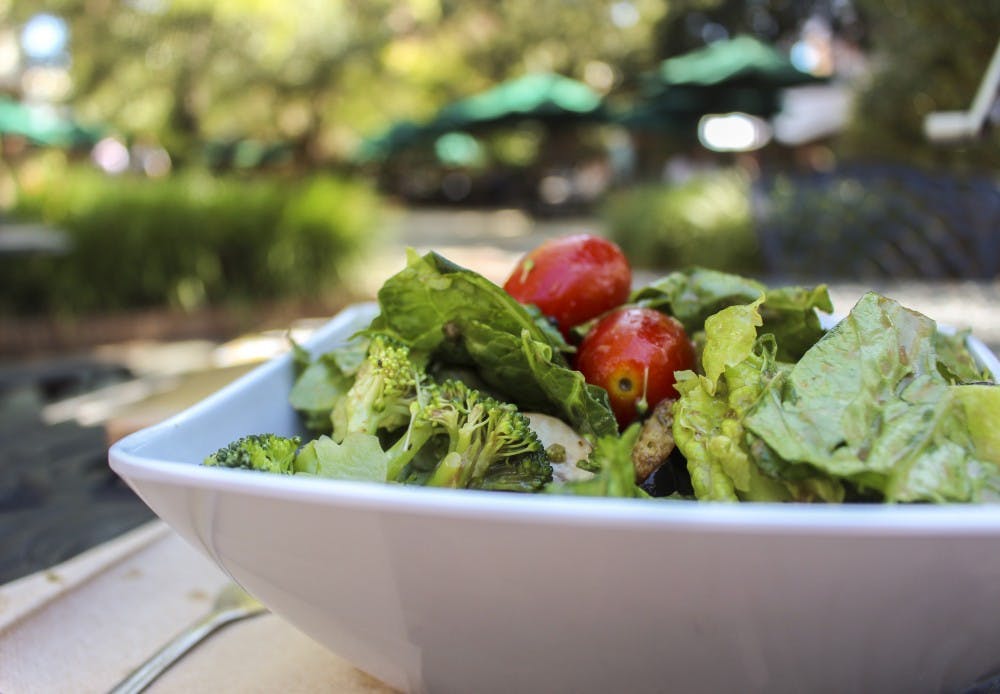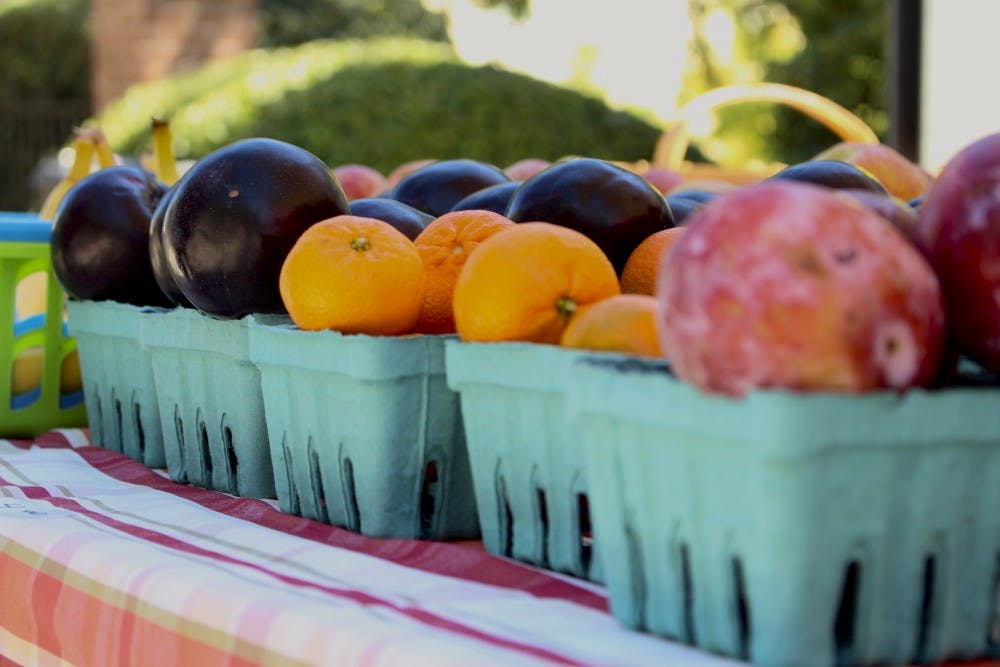Four years ago, I read Jonathan Safran Foer’s “Eating Animals.” The descriptions of factory farming were enough to get me to stop eating chicken — until my mom made chicken for dinner later that week, at least. While my foray into sustainable eating was remarkably short-lived, an increasing number of Americans are being drawn to the strictest of the meat-free diets: veganism.
In June, a study by researcher GlobalData reported that six percent of Americans identify as vegans— up from less than one percent just three years ago. That’s 18 million kale-brandishing hippies shaming the rest of us for our bacon-loving ways. And while the numbers are lower in the land of fried chicken, commonly known as the South, there’s probably between 1,000 and 2,000 vegans attending school at the University of South Carolina. So where are they hiding?
“I don’t come out like, ‘Hi, I’m Hallie, I’m vegan,’” biomedical engineering student Hallie Roerden said. She calls herself “a vegetarian with a food allergy” — she’s been unable to eat milk and eggs her entire life. But even though her diet is partly due to allergies, she still personally identifies with the environmental argument for veganism. Citing animal waste, factory farming and clearcutting, Roerden made the personal choice to eliminate meat while in high school.
“There’s kind of this skewed idea of what a vegan is,” Sarah Eustis said. A sophomore in biology, Eustis has been vegan for over two years. Some vegans are super obnoxious, she said, but most vegans chose the change for health or other personal reasons.
“Early in high school, I started to really pay attention to what I was eating and how it affected my body,” Eustis said. “I started recognizing the foods that didn’t really make me feel good.” Over the next two years, she slowly eliminated foods that made her feel bad until she became a vegan almost by accident.
According to campus dietitian Lisa Money, the gradual approach is best when transitioning to veganism. First, she said, people need to make sure they’re going vegan for the right reasons. No one should ever go vegan to lose weight or to gain control over life.
“The biggest challenge in college is that you’re on your own,” Money said. “You have to figure out what you value.”
Especially while on a meal plan, eating vegan can be a challenge. Roerden and Eustis both chose the 10-swipe meal plan when required freshman year, then left campus dining to cook on their own. While Sodexo published its weekly menus online, new provider Aramark has yet to do so. Additionally, labeling on campus tends to only show vegetarian, not vegan, options.
That doesn’t mean it’s impossible. Wheat Retreat has several vegan smoothies, like one made of kale, pineapple, coconut milk and banana. The all-you-care-to-eat locations always have vegan options. Loading chickpeas, mushrooms and more at the salad bar provides a well-balanced vegan meal. But the challenge is always cost.

“I would not recommend [going vegan] as a dietitian, only because it is more expensive,” Money said.
Roerden and Eustis, though, found that eating vegan on their own was cheaper than their diets before. Eustis spends about $50 once a month on basics like rice, quinoa, oatmeal and beans. Then she goes to the farmers market for produce every week and spends $20 to $30. That’s pretty comparable to the average college student, who spends about $40 a week including eating out.
“I personally think it’s more affordable,” Roerden said.
But what about taste? The vegan stereotype of eating tons of lettuce and tofu has become less and less of a reality – with 8 million vegans, you can bank on the number of options increasing as well.
“I think the first thing you have to recognize is that it’s not the same,” Eustis said. “A buffalo cauliflower wing is never going to taste like a buffalo chicken wing.”
The important thing, Money said, is to maintain flexibility and openness to trying new foods. Especially with Meatless Monday and other sustainable trends encouraging people to reduce consumption of animal products, the vegetarian and vegan food industry has expanded to over $4 billion.
“Everybody has plants in their diet and nobody is strictly carnivorous,” Eustis said. “So everyone is a little bit vegan, whether they want to admit it or not.”



